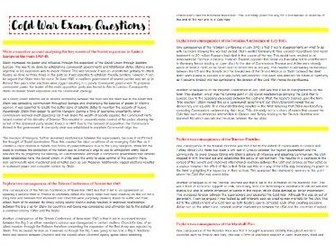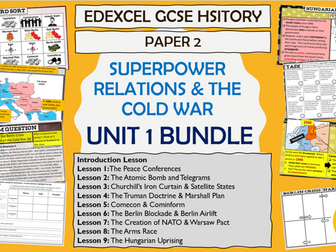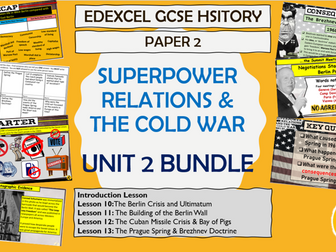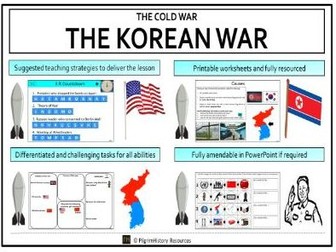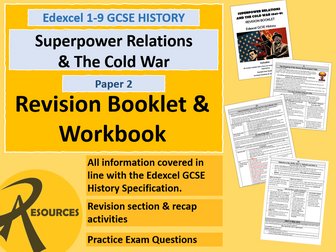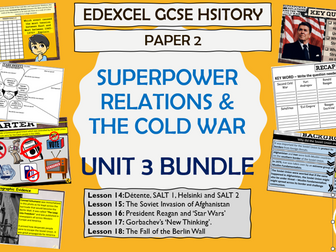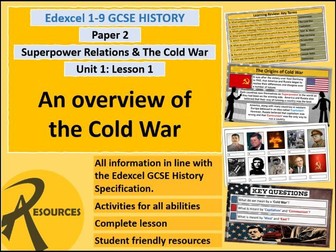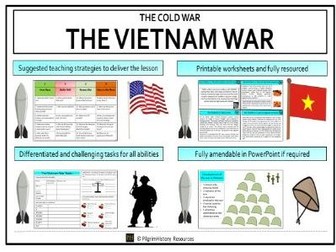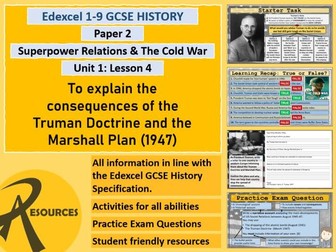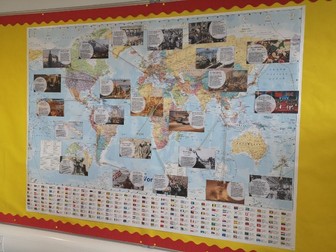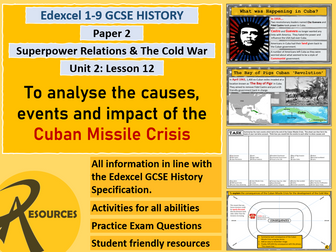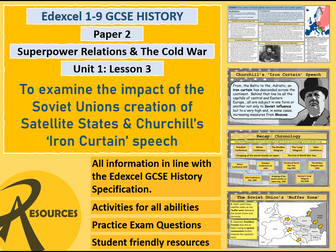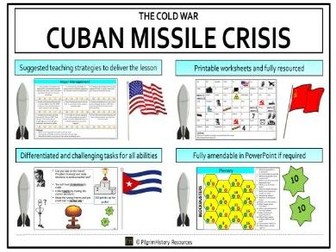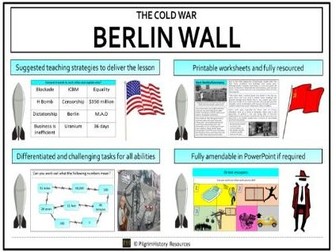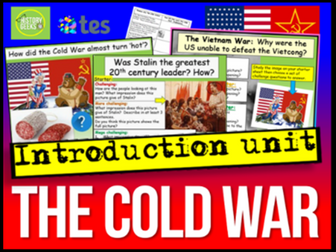
GCSE History Edexcel Model Answers: The Cold War
Model Answers for GCSE Edexcel History: Superpower Relations and the Cold War
This document (7 pages) contains 11 model answers and 2 plans. This style of question can be found in Paper 2 of Edexcel GCSE History (P4: Superpower relations and the Cold War 1941-91)
A list of the questions answered are also available in the preview.
Students can use these as inspiration to construct their own answers. Ideal for students who have fallen behind on revision or for mock exams.
Written by a straight 9 student with an offer to study at Cambridge, and have been fully corrected by an experienced Examiner and teacher!
CONSEQUENCE QUESTIONS
Explain two consequences of the Tehran Conference of November 1943
Explain two consequences of the Potsdam Conference of July 1945.
Explain two consequences of the Truman Doctrine.
Explain two consequences of the Marshall Plan.
Explain two consequences for relations between the USA and the Soviet Union of Reagan becoming President.
Explain two consequences of Gorbachev’s new thinking on Eastern Europe.
Explain two consequences of the Cuban Revolution of 1959
Explain two consequences of Mikhail Gorbachev’s decision to abandon the Brezhnev Doctrine - NOTE PLAN ONLY
NARRATIVE ACCOUNT QUESTIONS
Write a narrative account analysing the key events of the Soviet expansion in eastern Europe in the years 1945-48.
Write a narrative account analysing the key events in the Soviet Union in the years 1989-91. You may use the following in your answer: The impact of Sinatra Doctrine, Developments in East Germany.
Write a narrative account analysing the key events of the Hungarian Uprising in 1956. You may use the following in your answer: Imre Nagy, Soviet Tanks.
IMPORTANCE QUESTIONS
The importance of the Potsdam Conference for early Cold War tension between the USA and the Soviet Union.
Explain the importance of Ronald Reagan for relations between the USA and the Soviet Union - DETAILED PLAN ONLY
We really appreciate **feedback **on our resources so if you kindly leave a review below, you will be able to claim any resource (up to the value of this resource) from our shop for FREE. Just email simplyrevisable@gmail.com with your username and your chosen resource.
More resources available in my shop!
